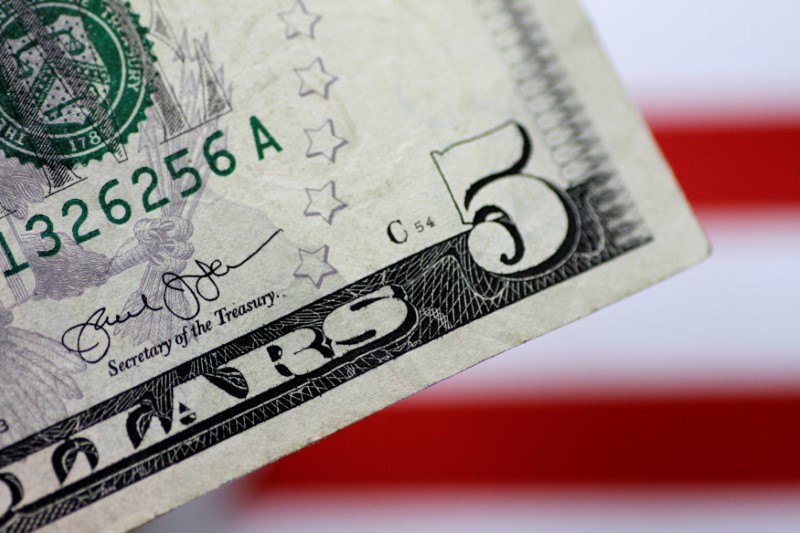Investing.com - Investors will be awaiting updates on U.S. producer price and consumer price inflation on Wednesday and Thursday, respectively, hoping for fresh insight on how how quickly interest rates may rise this year.
In a light week on the economic calendar, trade talks will remain in the spotlight with officials from the U.S., Canada and Mexico set to resume talks on the North American Free Trade Agreement in Washington on Monday.
Thursday’s Bank of England meeting will also be in focus, with investors overwhelmingly expecting rates to remain on hold after a recent spate of weak economic data.
The dollar hit the highest levels of the year on Friday buoyed up by expectations for further interest rate hikes by the Federal Reserve this year before trimming back gains slightly after disappointing U.S. employment data for April.
The U.S. dollar index, which measures the greenback’s strength against a basket of six major currencies, rose to 92.75, the most since December 27 before pulling back to 92.42 late Friday. The index posted a weekly gain of 1.17%.
The dollar has risen as investors bet that the Fed will continue raising rates while other central banks, including the European Central Bank and the BoE will act more slowly.
Data on Friday showing that the U.S. economy added fewer than expected jobs in April while wages barely rose did little to alter the view that rates will continue to rise this year.
In its rate statement last Wednesday the Fed acknowledged that inflation had moved closer to its 2% target. Fed officials are projecting two more rate hikes they year, although an increasing number of investors now see three hikes as possible.
The euro fell to four month lows on Friday, with EUR/USD touching 1.1911 before pulling back to 1.1961 in late trade, for a weekly loss of 1.4%.
Sentiment on the single currency was hit by data earlier in the week showing that growth in the euro zone slowed in the first three months of this year, underlining the case for the ECB’s caution in removing stimulus measures.
The pound also hit four month lows, with GBP/USD ending at 1.3531, down 1.79% for the week.
The dollar rose above parity with the Swiss franc on Friday, with USD/CHF rising as high as 1.0023.
Ahead of the coming week, Investing.com has compiled a list of significant events likely to affect the markets.
Monday, May 7
Australia is to release data on business confidence.
Financial markets in the UK will be closed for a holiday.
Tuesday, May 8
Australia is to publish data on retail sales.
China is to report on trade figures.
Fed Chair Jerome Powell is to speak at an event in Zurich, Switzerland.
The UK is to release industry data on house price inflation.
Wednesday, May 9
Canada is to report on building permits.
The U.S. is to release data on producer price inflation.
Thursday, May 10
The Reserve Bank of New Zealand is to announce its benchmark interest rate and publish a rate statement which outlines economic conditions and the factors affecting the monetary policy decision.
China is to release inflation data.
The UK is to produce data on industrial production and trade. Meanwhile, the BoE is to announce its latest monetary policy decision and publish what will be a closely watched rate statement.
The U.S. is to release reports on consumer price inflation and initial jobless claims.
Friday, May 11
Canada is to publish its monthly employment report.
ECB President Mario Draghi is to speak at an event in Florence.
The U.S. is to round up the week with preliminary data on consumer sentiment.
